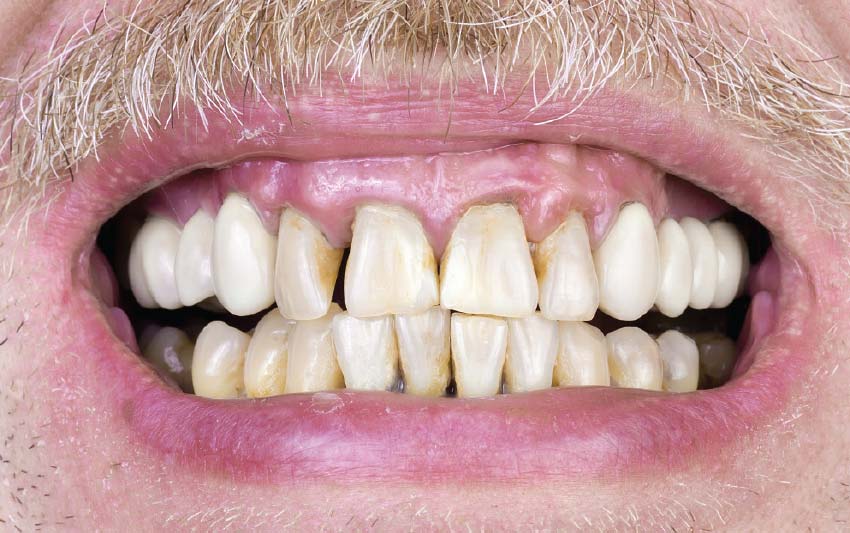E-cigarettes have gained popularity as a smoking alternative, but their impact on oral health remains a growing concern. While many users are aware of the risks associated with smoking traditional cigarettes, the potential harm e-cigarettes pose to gum health is often overlooked. Recent studies suggest that e-cigarettes can contribute to gum disease, causing issues like gum inflammation, bleeding, and even long-term damage. In this article, we’ll explore how e-cigarettes affect gum health, their relationship with gum disease, and offer essential tips for prevention.
How E-Cigarettes Affect Gum Health
E-cigarettes contain several harmful substances that can impact gum health in significant ways. While these devices are marketed as a less harmful alternative to traditional cigarettes, they still pose risks to oral health, particularly to the gums. Here’s how e-cigarettes can negatively affect gum health:
- Harmful Chemicals in E-Cigarettes
E-cigarette vapor contains various chemicals such as nicotine, propylene glycol, and flavoring agents, all of which can irritate the oral mucosa. This irritation weakens the gum tissues and makes them more susceptible to infection and disease. - Nicotine and Blood Flow Disruption
Nicotine, a key component in many e-cigarettes, has a constricting effect on blood vessels, which reduces blood flow to the gums. This decreased circulation hampers the delivery of oxygen and nutrients to the gum tissues, leading to weakened gum health. In the long term, this can result in gum inflammation, which is a precursor to more serious conditions like gingivitis or periodontitis. - Chemical Damage and Gum Infection
The chemicals in e-cigarette vapor, including aldehydes and other reactive compounds, can directly damage gum tissues. This damage can lead to chronic irritation, gum recession, and increased vulnerability to infections. Over time, repeated exposure to these substances may lead to long-term oral health issues.
The Relationship Between E-Cigarettes and Gum Disease
Gum disease, particularly gingivitis, is closely related to the buildup of bacteria in the mouth. E-cigarettes can alter the oral environment, potentially contributing to the development and progression of gum disease. Here’s how e-cigarettes play a role in gum inflammation and infection:
- Impact on Oral Bacteria Balance
The use of e-cigarettes can disrupt the natural balance of bacteria in the mouth. Research indicates that e-cigarette vapor may encourage the growth of harmful bacteria while inhibiting beneficial ones. This imbalance leads to an increased likelihood of plaque formation on the gums, a primary cause of gingivitis. - Long-Term E-Cigarette Use and Increased Gum Inflammation
Chronic use of e-cigarettes may exacerbate gum inflammation, making the gums more prone to swelling, redness, and bleeding. The nicotine and other chemicals in the vapor can impair the body’s ability to combat bacterial infections, which intensifies gum disease symptoms over time. - Higher Incidence of Gum Disease Among E-Cigarette Users
Studies show that e-cigarette users have a higher incidence of gum disease compared to non-users. A study conducted by the American Dental Association found that individuals who used e-cigarettes were 30% more likely to experience gum problems, including gingivitis, compared to those who did not use e-cigarettes.
| Study Findings | E-Cigarette Users | Non-Users |
|---|---|---|
| Incidence of Gum Disease (e.g., Gingivitis) | 30% higher | Baseline |
| Frequency of Gum Inflammation and Bleeding | Increased | Normal |
E-cigarette use not only leads to inflammation but may also increase the severity of gum disease, making regular dental care essential for users.
Do E-Cigarettes Cause More Gum Issues Than Traditional Cigarettes?
When comparing the oral health impacts of e-cigarettes and traditional cigarettes, there are notable differences in how each affects the gums. Although both pose significant risks to oral health, understanding these differences is key to assessing the relative danger of each. Here’s a breakdown of how e-cigarettes and traditional cigarettes compare in terms of gum health:
- Comparing the Effects on Oral Health
Traditional cigarettes are widely known to contribute to a range of oral health issues, including gum disease, tooth loss, and bad breath. The harmful chemicals in cigarette smoke, such as tar and carbon monoxide, directly damage gum tissues and reduce blood flow, making it harder for gums to heal. E-cigarettes, while often considered a “safer” alternative, still contain nicotine and other harmful substances that can negatively affect the gums, albeit in different ways. - Nicotine and Harmful Components in E-Cigarettes vs. Traditional Cigarettes
Both e-cigarettes and traditional cigarettes deliver nicotine, which is a major cause of gum problems. However, traditional cigarette smoke contains many more toxic substances, including tar and carbon monoxide, which directly contribute to gum tissue damage. E-cigarettes, on the other hand, contain fewer toxic chemicals, but they still release substances like propylene glycol, formaldehyde, and acetaldehyde, which can irritate the gums and contribute to inflammation. Despite being less harmful in some respects, e-cigarettes are not risk-free for oral health. - Are E-Cigarettes’ Long-Term Effects on Gums More Subtle and Harder to Detect?
One key concern with e-cigarettes is that their long-term impact on gum health may be more subtle and harder to detect than traditional cigarettes. The lack of immediate, visible damage, such as staining or noticeable bad breath, may lead users to believe e-cigarettes are less harmful to their gums. However, prolonged use of e-cigarettes may lead to gradual gum recession and inflammation that may not become apparent until significant damage has been done. Because the effects are less obvious in the short term, e-cigarette users may unknowingly be increasing their risk of gum disease over time.
| Comparison of Key Harmful Elements | E-Cigarettes | Traditional Cigarettes |
|---|---|---|
| Nicotine Content | Present (variable) | Present |
| Other Harmful Chemicals | Propylene Glycol, Formaldehyde, Acetaldehyde | Tar, Carbon Monoxide, Ammonia |
| Immediate Oral Health Impact | Less noticeable damage | Significant and immediate damage (staining, bad breath) |
| Long-Term Effects on Gums | Subtle, harder to detect | Obvious, rapid progression of gum disease |
In summary, while both e-cigarettes and traditional cigarettes present risks to gum health, traditional cigarettes are generally more damaging in the short term due to the immediate exposure to a wide array of harmful chemicals. However, the long-term effects of e-cigarettes on gum health may be more insidious, often going unnoticed until considerable damage has occurred.
How to Prevent Gum Disease Caused by E-Cigarettes?
While e-cigarettes can negatively impact gum health, there are several preventive measures you can take to protect your gums and overall oral health. By adopting healthy habits and being proactive in dental care, you can reduce the risk of gum disease and maintain a healthy smile. Here are some practical tips:
- Regular Dental Checkups to Detect Gum Issues Early
The most effective way to catch gum disease early is by scheduling regular dental checkups. Dentists can monitor your oral health and detect signs of gingivitis or other gum issues before they become severe. Regular cleanings will help remove plaque buildup and reduce the risk of gum disease, especially if you’re a regular e-cigarette user. Early detection and intervention can prevent long-term damage. - Adopt Good Oral Hygiene Practices
Maintaining proper oral hygiene is essential for preventing gum disease. This includes brushing your teeth twice a day with fluoride toothpaste and using dental floss to remove food particles and plaque from between your teeth. Additionally, using mouthwash can help kill bacteria and freshen breath, which is particularly important for e-cigarette users who may have an increased risk of oral bacterial imbalance. These practices will help reduce the risk of gum inflammation and infection. - Limit E-Cigarette Use and Avoid Overdependence
One of the most effective ways to reduce the impact of e-cigarettes on your gum health is to limit their use. While e-cigarettes are often marketed as a less harmful alternative to smoking, they still carry health risks. Reducing your reliance on e-cigarettes can minimize the exposure of your gums to harmful chemicals like nicotine and propylene glycol. If possible, consider reducing or quitting e-cigarette use altogether to give your gums a better chance at healing and staying healthy.
| Preventive Measures | Description |
|---|---|
| Regular Dental Checkups | Schedule bi-annual dental visits to detect early signs of gum disease. |
| Good Oral Hygiene Practices | Brush twice a day, floss daily, and use mouthwash to maintain gum health. |
| Limit E-Cigarette Use | Reduce frequency of e-cigarette use to minimize harmful effects on gums. |
By taking these preventive measures, you can significantly reduce the risk of gum disease caused by e-cigarettes and ensure your oral health remains in top condition.
What to Do If You Already Have Gum Issues?
If you’ve noticed symptoms like bleeding gums, swelling, or discomfort, it’s crucial to take immediate action to address these issues. Gum problems can progress quickly if left untreated, leading to more severe conditions like periodontal disease. Here’s what you should do if you’re experiencing gum issues related to e-cigarette use:
- Seek Immediate Dental Care for Symptoms Like Bleeding or Swelling
If you notice signs of gum disease such as bleeding, swelling, or tenderness, it’s important to visit a dentist right away. These are common symptoms of gingivitis, the early stage of gum disease, and they require professional attention. A dentist will be able to examine your gums, determine the severity of the condition, and recommend appropriate treatment options. Early intervention is crucial to prevent the problem from worsening and leading to more serious gum infections or tooth loss. - Treatment Options for Gum Disease
The treatment for gum disease typically involves professional cleaning procedures to remove plaque and tartar that have built up on the teeth and gums. A dentist may perform a procedure known as scaling and root planing, which helps to clean below the gumline and smooth the tooth roots to promote healing. In more advanced cases, other treatments such as gum surgery or laser therapy may be necessary. It’s essential to follow your dentist’s advice and attend follow-up appointments to ensure full recovery. - Can Stopping E-Cigarette Use Improve Gum Health? Recovery Tips
Quitting or reducing e-cigarette use can significantly improve gum health, especially if the damage is caused by nicotine and other chemicals in the vapor. Stopping e-cigarette use allows the gums to heal and regain better blood flow. However, it’s important to continue with good oral hygiene practices, including regular brushing and flossing, even after you stop using e-cigarettes. Your dentist may also recommend a tailored recovery plan that includes frequent cleanings and possibly special treatments to aid the healing process.
| Step | Action |
|---|---|
| Seek Immediate Dental Care | Visit your dentist as soon as you notice symptoms like bleeding or swelling. |
| Treatment Options | Scaling, root planing, and other professional treatments based on severity. |
| Stopping E-Cigarette Use | Quitting e-cigarettes can improve gum health, but maintaining good hygiene is essential for recovery. |
By addressing gum issues promptly and seeking professional treatment, you can prevent further complications and improve your overall oral health.





